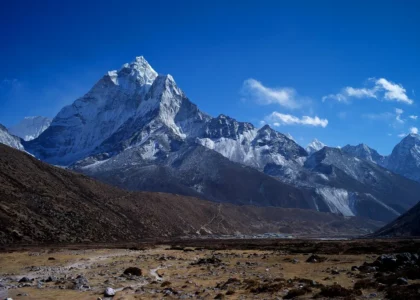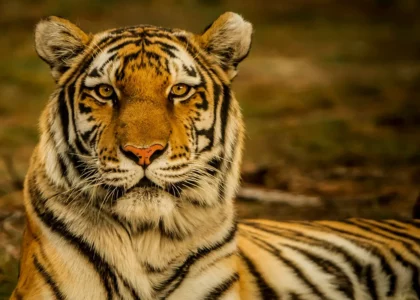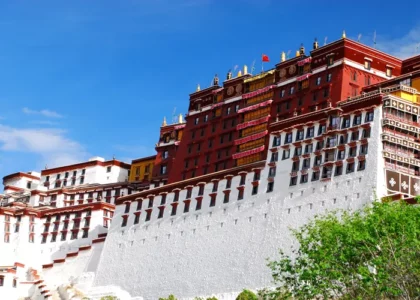Nepal Bird Watching Tour -Best Places for Birding in Nepal
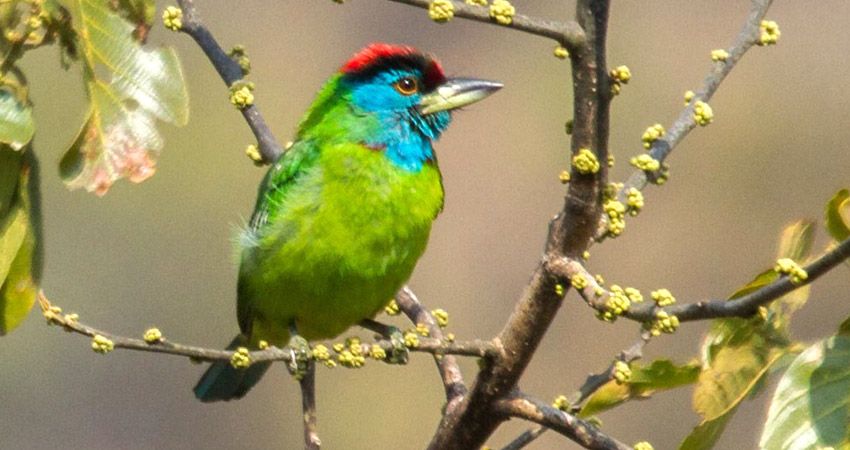
Nepal Bird watching tour is a recreational activity that helps you monitor different bird species. We can manage through our naked eyes or use equipment like binoculars, telescopes, etc. Nepal is one of the best places for bird-watching tours. Nepal has a diverse range of ecosystems, from lowland subtropical forests to the high-altitude environment of the Himalayas. Similarly, the high-altitude climate of the Himalayas allows you to explore over 850 species of birds. Nepal has spectacular scenery and cultural contrasts but is also famous as a birdwatcher’s paradise.
Nepal is naturally blessed with a vast array of vibrant birdlife. Due to the remarkable diversity of habitats, we can find over 850 species of birds here, more than in any other region of comparable size in Asia. Nepal is home to about 10% of the world’s bird population. The sight of rare birds generates excellent excitement. The beauty of nature and birds are the popular symbols of Nepal.
Kathmandu Valley has more than 500 bird species.
The Nepal bird watching tour takes you through the lowland jungle of Terai, including wildlife reserves and many other conservation areas and parks. We can also find 500 species in the capital city of Kathmandu alone. The famous bird-watching places in Kathmandu are Phulchwoki, Godavari, Nagarjun, Bagmati River, Taudaha, etc. Likewise, Chitwan and Bardia Harbor also have a wide variety of birds. Koshi Tappu is another sighting of an incredible variety of resident and migratory birds from far away from Siberia.
The opportunity to see different kinds of birds will make your trip memorable. You will be mesmerized by the enjoyable view of many species of birds along with the panoramic mountainous view, glimpses of wild animals, and exposure to the local people’s culture and traditions. Nepal is famous for being the home of endangered birds like the Impeyan Pheasant, Nepal’s national Bird, Dafee, and the Spiny Babbler. The birds-watching program takes you to explore the birds and diverse wildlife in some famous wetlands and national parks of Nepal.
Get Your Binoculars, advance, And Be Ready To Experience The Nepal Bird Watching Tour With Our Team……

Nepal’s Major Bird watching Places:
The Kathmandu Valley:
Kathmandu Valley has more bird species than other places in Nepal. Almost 500 species of birds are found here. The wetlands and open fields inside the Valley make it possible to create diverse habitats for many species of birds. There are four major bird-watching areas in the Valley.
One can launch Nepal Bird watching tour on the banks of the Bagmati and Manohara rivers. The birds sighted along these rivers are Egrets, Herons, Kingfishers, Ibis Bill, Wood Sandpipers, and Plovers. The Chovar Gorge is particularly recommended for birds, as its isolation from human habitation has encouraged their presence. Harboring 40 species of birds primarily dependent on wetlands, Taudaha, a lake on the way to Dakshinkali, attracts migrant birds.
Phulchowki:
This place is 2760m and is the highest of the mountains. It is situated 20 km southeast of Kathmandu, encircling the Valley, and provides an ideal introduction to the birds of Nepal. Phulchowki has a great density of bird species—around 300 species. The hillside trails and roads are covered with forest featuring outstanding flora and diverse birds.
Bird watchers in Phulchowki might encounter birds such as the endemic spring babbler, as well as the Curia, Mountain Hawk Eagle, Rufous Bellied Pied Woodpeckers, and the Black-throated Parrotbill, to name a few. The Blue-Napped Pitta and the Redheaded Trojan are rare birds in the area.
The Godavari, at the foot of Phulchowki Hill, where the Royal Botanical Garden is situated, records over 100 species of birds, including the lesser racket-tailed Drongo, Tibetan siskin, and the spotted fork tail. The garden is a plantation containing exotic and local flora and is a ‘Garden of Dreams’ for birds and bird watchers alike.
Shivapuri Watershed and Wildlife Reserve and Nagarjuna Dada:
Another place we go for our Nepal Bird watching tour is in Shivapuri Watershed Reserve, 12km north of the city, and Nagarjuna in the North West. Shivapuri National Park is one of the wealthiest forested areas. The park is home to about 318 species of birds. The forest holds a significant population of three restricted-range bird species, i.e., the spiny babbler, which is also Nepal’s endemic Bird, the Hoary-throated Barwing, and the white-throated Tit.
This diversity is reflected in the area’s avifauna, including the Hill Partridge, Great Barbet, Wedge-Tailed Green Pigeon, Eurasian Jay, Kalij Pheasant, Nepal Fulvetta, Asian Paradise-Flycatcher, Rufous-bellied Woodpecker, Mountain Scops Owl, and Grey-winged Blackbird. Two globally threatened birds, the white-rumped Vulture and Hodgson’s Bush chat, can also be seen. Shiva Puri delights bird watchers with an eye for exploration.
The Nagarjun Hill has a royal retreat for the royal family members and, therefore, was and will remain a protected area. This area hosts birds such as the Northern Eagle Owl, Red-billed Blue Magpie, Long-tailed Mountain Thrush, Chestnut-Headed Bee-Eater, Maroon Oriole, Large Hawk Cuckoo, and Eurasian Woodcock.
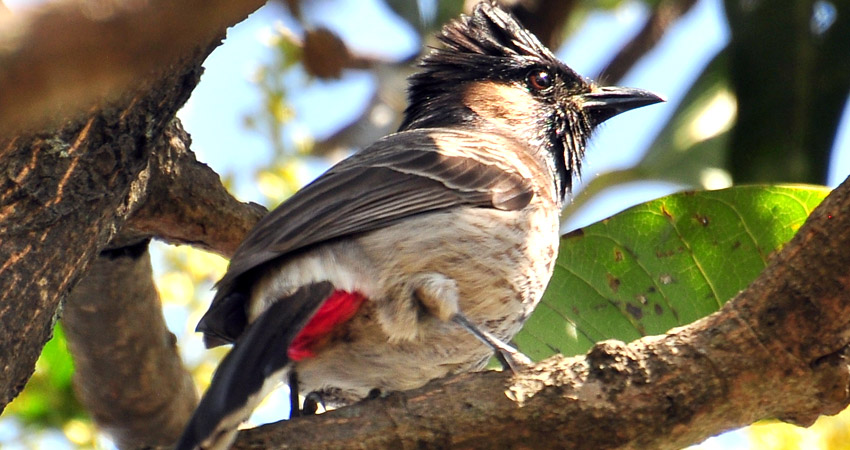
Pokhara City:
In Pokhara, the two well-known lakes, Phewa Tal and Begnas Tal are the best places for Nepal Bird watching tour. The surrounding areas are highly recommended for Bird watching. The forest around the south shore of Phewa Lake, with minimum disturbance and away from human inhabitation, is the best for Bird watching. The summit of Annapurna and Machhapuchhare creates an ambiance of peace and magic, and the surroundings of the Valley provide an extraordinary habitat for a variety of birds. Watch out in the fields and pools, especially in the winter, for egrets, herons, pits, buntings, etc. Other birds are gulls, terns, ducks, falcons, etc.
Begnas Lake, 15km from Pokhara, is another worthy place to visit for Bird watching in Pokhara. Terraced hills and light forests surround the lake. One should spend time on the slopes and wet fields. Birds sighted here are Ducks, pheasant-tailed Jacana, Hopei Grey-bellied Tessie, common pintail snipe, bulbuls, etc. Species regularly seen in this forest and along the shore of the lake include Besra, Red-thigh Falconet, Pallid and Pied Harriers, Eurasian Griffon, Redheaded and Eurasian Black Vultures, Kalij Pheasant, etc.
Pokhara Lakeside is a tourist town that caters to all visitors’ needs, from cheap lodges to costly star hotels. This makes the city famous for Nepal Bird watching tour and experiencing the natural and artificial heritages.
Koshi Barrage and Koshi Tappu Wildlife Reserve:
Koshi Barrage and Koshi Tappu Wildlife Reserve are in the eastern Terai to the Far East of Nepal. The situation on the Koshi flood plain results in the dramatic variation of the reserve environment according to the seasons. This is one of the best Nepal bird watching tour sights. Along with about 26 varieties of Duck alone, Koshi is great for waterfowl and Waders. The birds can be viewed by boat, gliding through waters in the stillness of early morning and evening.
Koshi Tappu wildlife reserve is a combination of scrub grassland and deciduous riverine forest, with over 450 species of birds recorded so far, including 20 species of Duck, ibises, storks, swamp partridges (Francolins glairs), herons, egrets, Bengal Florian (Epidotic Bengalensis), Black Ibis, Honey Kites, Ospreys, Black Headed Orioles, Peregrine Falcon, Partridges and many other exotic and migratory waterfowl not found elsewhere in Nepal. The area reputed as a bird haven is corroborated by the fact that it is the shelter of 13 Nepal’s nearly threatened bird species out of 22.

Chitwan National Park:
The Royal Chitwan National Park, established as the country’s first national park in 1973, is the best-known site for Nepal bird-watching tours. We can also watch Birdin a chair, the back of an elephant, or in a jeep (by far the last choice). Also, if you wish to walk, we will be accompanied by a guide, a naturalist, or a preferred ornithologist. The area consists of Sal Forest, Riverine forest, and grasslands, where rivers form the park’s boundaries. Over half of Nepal’s bird species are found in Chitwan, numbering 540 species.
This number includes about two-thirds of the country’s globally threatened bird species. The Grey-crowned Prinia, Slender-billed Babbler, and the Lesser Adjutant inhabit the Chitwan grasslands. The park also holds the most of Nepal’s near-threatened bird species –15 out of 22.
These include Ferruginous Pochard, Great Hornbill, and Black-bellied Tern. Also, Grey-headed and Lesser Fish Eagles, White-tailed Eagle, Cinereous and Redheaded Vultures, Furthermore, Pallid Harriers, Lager Falcons, Darters, Painted, Black-necked Storks, We can watch Rufous- rumped Grassbirds and Yellow-breasted Bunting.
Other birds include the Sarus Crane, Bengal, Lesser Florian, and Indian Skimmer—also Pallas’s Fish Eagle, Jerdon’s Babbler, and Curlews. The Bar-headed Goose, a trans-Himalayan migrant, is seen near the Narayani River.
Trekking Regions:
It is best to go around the foothills of the kingdom on a leisurely trek to watch birds. Nepal’s three main trekking areas are the Langtang, Solukhumbu, and Annapurna regions. These trekking areas offer a wide variety of bird species. Among these three regions, the Annapurna region is the best choice. Similarly, there are many bird species in the other two areas.
The Annapurna Conservation Area Project (ACAP) supports remarkable but delicate biodiversity. There are more than 441 species of birds. The Kali Gandaki valley is also a major migration pathway in the autumn with 40 species of birds.
Nepal bird-watching tour itinerary.
Day 1: Greetings at Kathmandu Airport
We will meet you at Kathmandu Tribhuvan International Airport and take you to your Hotel. When you have had time to settle in and freshen up after your long fight, you will be invited to our office for a briefing about your program. During this visit, we will help you check your equipment and facilitate processing other necessary items, such as National Park Permits, special permits, etc. If you arrive at night, we will have the same discussion the following day after breakfast for your Nepal bird watching tour.
Day 2: A full-day sightseeing tour of Kathmandu, the capital valley
After breakfast, you will take a full-day sightseeing tour around Kathmandu Valle. You can visit the sacred Pashupatinath Temple and Swyambhunath, which are very ancient and essentially enlisted in UNESCO World Heritage sites.
The biggest Buddhist Stupa at Boudhnath and the fine arts and historical architecture of Kathmandu Durbar Square reflecting the ancient Nepalese culture are highlighted on our guided Tour. On returning to your Hotel, you will have time to explore the local area, have dinner, and perhaps stroll through the famous streets.
Day 3: Start bird-watching from Godavari
Today our Nepal bird watching tour start from Godavari Botanical Garden after a short city tour through the rivers of Bagmati and Manohara. In the evening, set off for a bird-watching trip to Godavari Botanical Garden and stay overnight in a hotel at Godavari.
Day 4: Godavari-Phulchowki Hill-Kathmandu
After breakfast, leave with a lunch pack and hike to Phulchowki Hill. The hillside trail has a thick forest featuring outstanding flora and diverse birds. Phulchowki has a great density of bird species—about 90 species, including the endemic spring babbler and the Curia and Mountain Hawk Eagle. We can also watch Rufous-bellied Pied Woodpeckers, the Black-throated Parrotbill, etc. In the evening, return to Kathmandu.
Day 5: Birding in Nagarjun Forest and Shivapuri Watershed and Wildlife Reserve
Shivapuri can be reached two ways: either from Sundarijal or from Budhanilkantha. The park is home to around 318 species of birds, some as Laughing Thrush, Crested Serpent Eagles, little Pied Fly Catchers, Rupy-throats, and Babblers. In the Nagarjun area, birds such as the Northern Eagle Owl, Red-billed Blue Magpie, Long-tailed Mountain Thrush, Chestnut-headed Bee-Eater, Maroon Oriole, Large Hawk Cuckoo, and Eurasian Woodcock etc. can be seen closely. Return to Hotel in Kathmandu.
Day 6: Kathmandu to Chitwan
In our Nepal Bird watching tour today, we will drive to Chitwan National park from Kathmandu. About a 4-hour drive to Chitwan National Park and check in the Hotel. Stroll in the village or visit the elephant breeding center in the evening. Spend a beautiful night in the resort.
Day 7: Birding at Chitwan
After tea or coffee, nature walks on foot to encounter the environment and the morning birds. Have a full-day birding trip in different vegetations of the park, from wetlands to grasslands to Sal forest. We can have a jungle safari or Jeep safari to view some varieties of birds in the deep forest. We find more than 500 species, including Blue Indian Roller, Stork-billed Kingfishers, Bengal Florican, Asian Paradise Flycatchers, Bee-eaters, and Cormorants.
Day 8: Chitwan to Koshi Tappu Wildlife Reserve
After a drive from Chitwan, we will have a full-day birding trip in the Koshi Tappu Wildlife Reserve. Koshi Tappu Wildlife Reserve combines scrub grassland and deciduous riverine forest, with over 450 bird species recorded. Black Ibis, Honey Kites, Ospreys, Black Headed Orioles, Peregrine Falcon, Partridges, Storks, etc are some that you will encounter throughout the day.
Day 9: Drive or Flight back to Kathmandu
You can have a flight or drive in the vehicle to Kathmandu Valley. After returning, you can relax, walk over the streets, and view the everyday lives of Nepalese people. Also, you can buy some memories and gifts to bring back to your home. Full-day leisure can accompany some entertainment and sound time in the Hotel. In the evening, you can prepare to pack your baggage with the mentality to leave Nepal.
Day 10: Free day in Kathmandu
Today, you will have a free day in Kathmandu Valley. Have some rest in your Hotel. You can also stroll over the streets, buy souvenirs, and remember from Nepal. We will have a typical Nepali dinner with cultural shows in the Hotel in the evening.
Day 11: Final Departure
If you are leaving Nepal and are not continuing your holiday here, we will drop you off at the international airport to catch your flight back home. We wish you a happy journey in Nepal’s traditional and cultural ways and hope to see you again.
Clothing for the Nepal bird watching Tour:
Nepal has a wide range of climates, so take light and warm clothing in casual and comfortable styles. Check your traveling time and bring the clothing for the Tour accordingly. Warm clothes usually work. If you are going trekking, you need trekking equipment and accessories.
Light cotton clothing is the best for lower altitude places such as Chitwan, Bardia, and Koshi Tappu.
Bring comfortable walking shoes for the Nepal bird watching tour if you are hiking. For trekking, you can bring hiking shoes. Also, get a pair of light sandals. We advise you to ‘wear’ your walking boots/shoes for several weeks before your trip. As a result, you’ll be much more comfortable if you do so. Sandals with rugged bottoms are suitable for hiking around town and wearing in showers.
You will need your toiletries and towels. You’ll also need your medical kit, sewing repair kit, and a good headlamp with extra bulbs and batteries.
You can store your luggage in the hotels. You can also bring better clothing to look good around the city, such as Kathmandu and Pokhara.
Sunglasses are a must. A warm hat and gloves are beneficial for winter hiking, swimming customs for rafting, and elephant bathing in Chitwan; good socks and a sun hat are also helpful for jungle safari tours and warm sightseeing days in town.
Here are some things you might want to bring for the Nepal bird watching tour
• Walking/hiking, trekking, river shoes – broken in.
• Clothes you can layer. Jacket, T-shirts, fleece, windbreaker, shorts, lightweight pants, sports pants, gloves & sun hat (for summer and autumn season, not many clothes).
• A nice shirt or pants for nightlife and a good camera—this country is a feast for the eyes and a photographer’s dream!
• Pocket size Flashlight (you can buy it here if need be, but there are always power cuts, so have it handy! (It seems like the lights go off whenever you are in an unfamiliar toilet.)
• A sarong (for girls) and a lightweight towel is good for Nepal bird watching tour.
• Ladies, if you like wearing makeup when you go out, bring it. It is hard to find here, and most of the makeup is weird, cheap stuff. Just get some things that make you happy for party nights!
Best Price Guaranteed, Easy to change Date, Instant Confirmation
Book This Trip Have Questions?
Have Questions?Talk to Expert
Meet Mr. Purushotam Timalsena (Puru), Nepal's best trek and tour organizer, who has been working in the Himalayas for more than 24 years.
WhatsApp/Viber +977 98510 95 800




